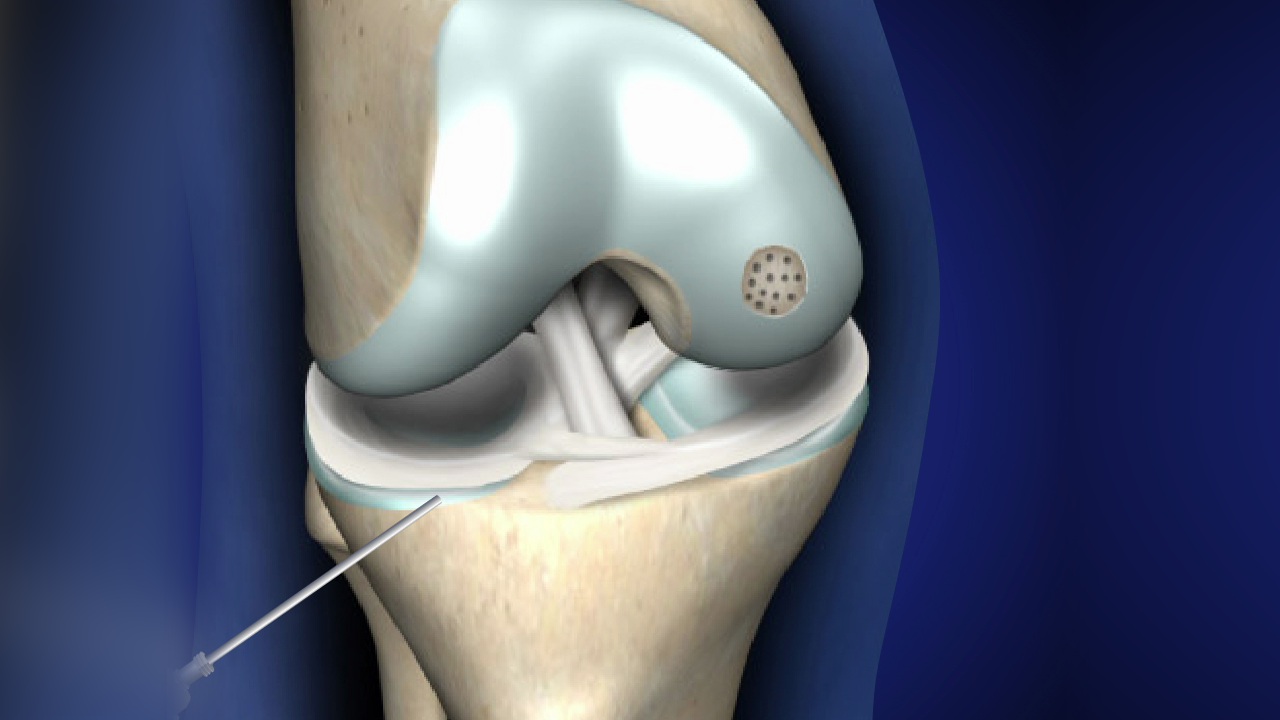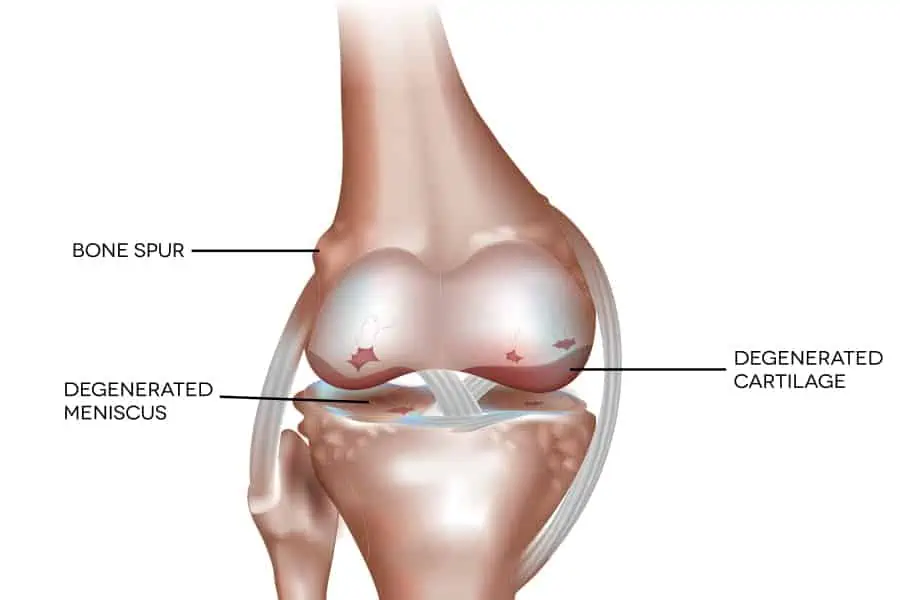Microfracture Surgery

Microfracture surgery is a common procedure used to treat damaged cartilage in the knee. Cartilage is a type of connective tissue that covers and cushions the bones in your joints. Microfracture surgery creates tiny fractures in the bone beneath the damaged cartilage, which then stimulates new cartilage growth. While this surgery can be successful in restoring function to the joint, it is not considered a cure-all and often requires additional treatment and rehabilitation. Here we will discuss the microfracture surgery process, what to expect after surgery, and potential risks and complications.

Symptoms of an articular cartilage injury
The symptoms of an articular cartilage injury include:
– Pain in the joint
– Swelling in the joint
– Stiffness in the joint
– Difficulty moving the affected joint
If you are experiencing any of these symptoms, please contact your orthopedic surgeon to discuss if Microfracture is right for you.
Diagnosis of cartilage damage

There are several ways to diagnose cartilage damage. The most common is an MRI, which can show signs of inflammation or damage to the cartilage. Other tests, such as X-rays or CT scans, may also be used to rule out other causes of joint pain, such as arthritis. Your doctor may also recommend a biopsy, in which a small sample of cartilage is removed and examined under a microscope.
If you have cartilage damage, your symptoms may include joint pain, stiffness, swelling, and a limited range of motion. Treatment for cartilage damage depends on the severity of the injury and may include rest, ice, compression, elevation, and physical therapy. In severe cases, microfracture may be necessary to repair or replace the damaged cartilage.
Microfracture becomes necessary when the pain is unbearable and physical activity is significantly reduced. Microfracture is a surgical procedure in which tiny fractures are created in the bone around the damaged cartilage. This stimulates the growth of new cartilage, which can help repair the damage. In some cases, articular cartilage defects may need a transplant to replace the damaged cartilage.
Microfracture: The Procedure
Microfracture is a minimally invasive orthopaedic surgery used to treat small fractures or cracks in bones. It is typically performed using local anesthesia and does not require hospitalization. The microfracture procedure involves making tiny incisions in the skin and using special instruments to create microfractures in the bone. Bone marrow cells and blood flow to the area helps to stimulate cartilage restoration. This stimulates the growth of new bone tissue and can help to repair the damaged bone. Microfracture is often used to treat unstable cartilage that has not healed properly or that is slow to heal. It can also be used to treat fractures that are difficult to treat with other methods. Microfracture is a relatively new procedure and there is still some debate about its effectiveness. Some studies have shown that microfracture can be an effective treatment for certain types of fractures, while others have not.
Risks associated with Microfracture
The risks associated with microfracture surgery on the knee are fairly low, but as with any surgery, there are potential complications that can occur. The most common complications associated with this procedure are:
Infection:
As with any surgery, there is always a risk of infection. The chances of developing an infection after microfracture surgery are usually low, but they increase if the patient has diabetes or an immune system disorder.
Nerve damage
There is a small risk of damaging the nerves around the knee during surgery. This can lead to numbness or tingling in the affected leg.
Blood clots
Patients who have microfracture surgery are at risk of developing blood clots. This is more likely to occur if the patient is overweight, smokes, or has a history of blood clots.
Stiffness
The knee may become stiff after microfracture surgery. This is more common in patients who are older or have a pre-existing condition that causes joint stiffness.
Failure of the surgery
There is a small risk that microfracture surgery will not be successful in repairing the damage to the knee. This can lead to continued pain and disability.

Recovery after Microfracture
Most patients who have microfracture surgery on the knee can expect to return home the same day or the day after surgery. The leg will be placed in a splint or cast to protect the surgical site. Patients will usually need to use crutches for four to six weeks. Physical therapy will be started soon after surgery to help improve range of motion and strength. Most patients will see a significant improvement in pain and function within three to six months. However, it may take up to a year or more for the full effects of the surgery to be seen
A small number of patients may experience complications after microfracture surgery. These can include infection, nerve damage, blood clots, stiffness, and failure of the surgery to repair the damage. In most cases, these complications can be treated and the patient will make a full recovery. However, some patients may experience long-term problems or disabilities as a result of microfracture surgery.
Tips to prevent articular cartilage in the Knee
Following are some tips that can help prevent the development of articular cartilage in the knee:
Weight control:
Maintaining a healthy weight is important for preventing damage to the knees. Being overweight or obese puts extra stress on the knees, which can lead to the development of cartilage.
Exercise:
Exercise is important for maintaining joint health. It helps to strengthen the muscles and ligaments around the joints and can help reduce the risk of developing cartilage.
Proper footwear:
Wearing shoes that provide good support and cushioning can help reduce the risk of developing cartilage. Shoes that are too tight or that do not provide enough support can put extra stress on the knees and lead to cartilage damage.
Avoiding high-impact activities
Activities that involve high impact, such as running or jumping, can put extra stress on the knees and lead to cartilage damage. If you are going to participate in these activities, it is important to wear proper footwear and to warm up properly beforehand.

Frequently Asked Questions
Microfracture is a surgical technique used to repair damaged knee cartilage. The procedure involves making small fractures in the subchondral bone plate, which then release cells that help promote the growth of new cartilage. A calcified cartilage layer is a thin layer of cartilage that covers the ends of bones in a joint.
Microfracture is typically performed arthroscopically, which means that it is done through small incisions using specialized instruments. The surgeon will make several tiny holes in the bone around the knee joint and then insert a special instrument into the holes to create the microfractures.
Microfracture can provide significant pain relief and improve knee function in patients with damaged cartilage. The procedure can also delay or prevent the need for joint replacement surgery.
As with any surgical procedure, there are some risks associated with microfracture. These include infection, bleeding, and blood clots. Any underlying bone like the subchondral bone can also get damaged in some cases. There is also a risk that the new cartilage will not grow properly or that it will be uneven. Sometimes, autologous chondrocyte implantation is done to treat the same problem.
Most patients who have microfracture knee surgery can expect to return to their normal activities within a few months. However, it may take up to a year for full healing to occur and for the new cartilage to mature.
Patients with articular cartilage defect (the smooth, white tissue that covers the ends of bones) are candidates for microfracture. The damage may be caused by injury, arthritis, or other conditions. Patients with symptomatic cartilage defects that have failed to respond to conservative treatments (such as rest, ice, physical therapy, and medications) may also be candidates for microfracture.
3 Ways to Level Up Your Rehab and Injury Prevention With Us




